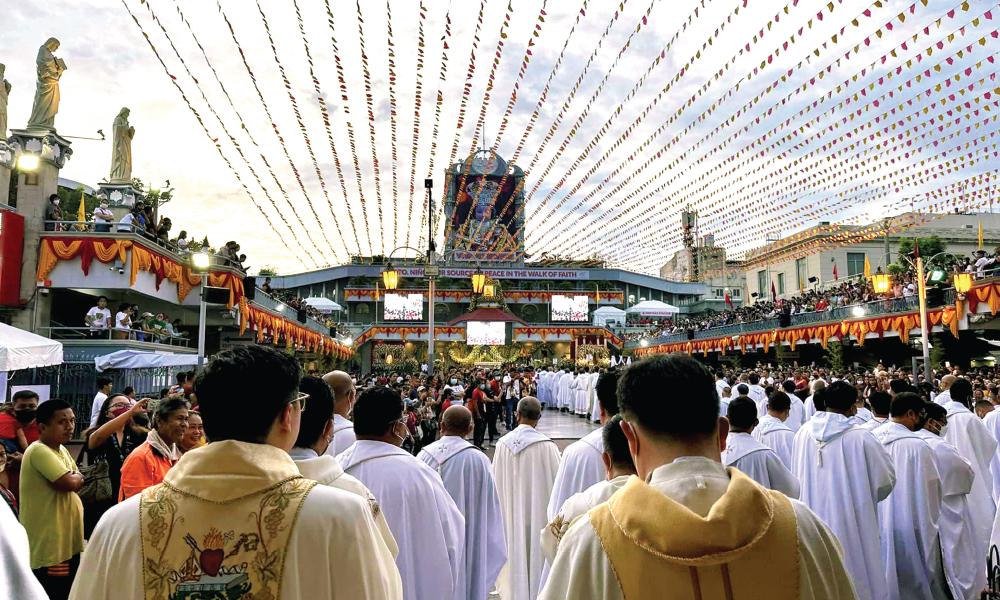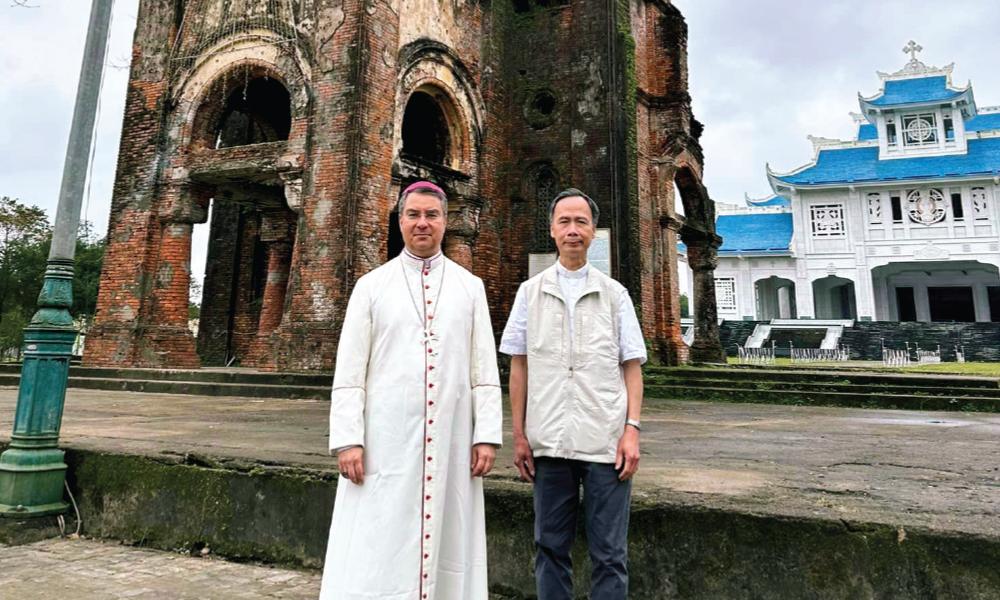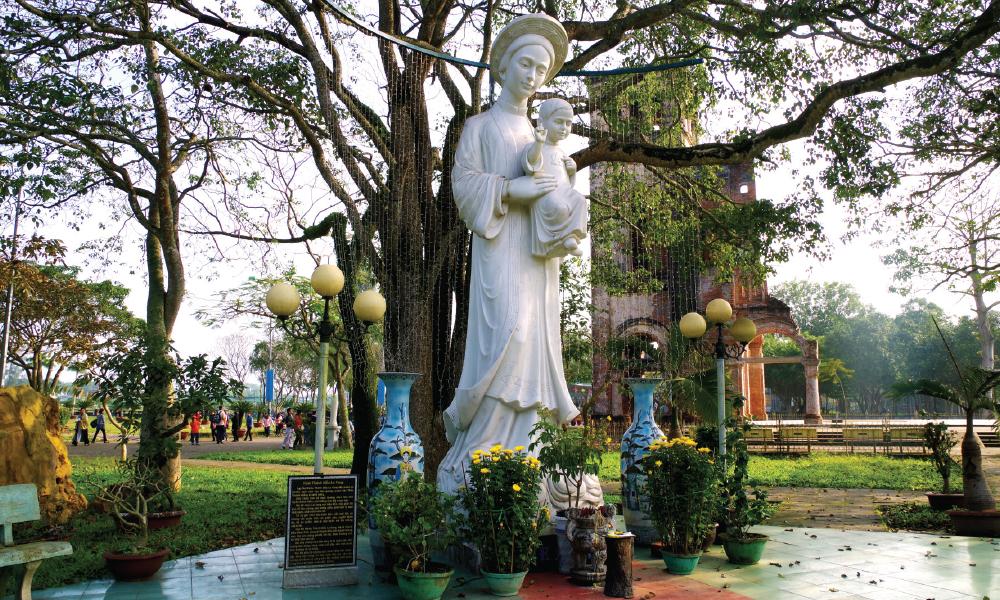
Encountering the Sacred: A Pilgrimage to Southeast Asia
It was a blessing for me to join Bishop Cantú and more than 80 clergy and faithful to visit the Philippines and Vietnam, my native country, on a two-week pilgrimage in January 2023. Originally slated to take place in 2021, when the Church in the Philippines was set to celebrate 500 years of Christianity, it was postponed because of the COVID pandemic. We spent our first week in the Philippines, the only Catholic nation in Asia, and the following week in Vietnam. Both countries offered us memorable experiences that I will cherish and reflect upon in my heart.
It was a blessing for me to join Bishop Cantú and more than 80 clergy and faithful to visit the Philippines and Vietnam, my native country, on a two-week pilgrimage in January 2023. Originally slated to take place in 2021, when the Church in the Philippines was set to celebrate 500 years of Christianity, it was postponed because of the COVID pandemic. We spent our first week in the Philippines, the only Catholic nation in Asia, and the following week in Vietnam. Both countries offered us memorable experiences that I will cherish and reflect upon in my heart.
Santo Niño Celebrations in Cebu, the Philippines.
Filipino faith and religiosity are expressed through public liturgies, popular devotions, and communal traditions. We saw it clearly in the Santo Niño celebrations at its namesake basilica in Cebu. The crowds gathered in the church and around the jumbo screens in the surrounding streets to follow the live-streamed Masses.
We witnessed massive crowds of mostly young adults expressing a fervent, joyous faith. The city police estimated that three million people had joined the Santo Niño procession in Cebu on January 14th. Navigating the perilous heavy traffic in this city during the festivities while our group attempted to reach the Cebu Provincial Capital for our official welcome reception was quite an experience!
The Feast of the Black Nazarene in Quiapo, Manila.
Filipino Catholics also have great devotion to the suffering Christ and to Mary under different titles. Before traveling to Cebu, we visited the Minor Basilica of the Black Nazarene in Quiapo, Manila, named for its life figure of Christ carved from black wood which is believed to be miraculous. A special feast celebrating the Black Nazarene, which took place on January 9, drew about 80,000 devotees to the streets of Manila.
Shrines
We were also impressed by their devotion to the Blessed Mother at Baclaran Shrine of Our Mother of Perpetual Help, Our Lady of Peace and Good Voyage (Antipolo Church), and at the Simala Shrine, where long lines of devotees sought healing through the intercession of Our Lady of Lindogon in front of her miraculous image. Hundreds of crutches and about a dozen wheelchairs have been left at the shrine, symbolizing the occurrences of supposed miracles. Lastly, during our visit to Saint Joseph’s Shrine in Las Piñas, we saw an organ made mostly of bamboo pipes, which was another highlight.
While the pilgrims continued their visit in the Philippines, Bishop Cantú and I traveled to Vietnam, joining some of our priests from San José who had joined us on the second leg of the pilgrimage. While the Philippines is a nation with more than 86 percent of its population being Catholic, Vietnam is a more religiously diverse country where Catholics make up a minority of around 7 percent of the population. The Church there coexists with well-established Buddhism, Confucianism, and indigenous religions such as Caodaim and Hoà Hảo Buddhism.
Shrine of Our Lady of La Vang
We visited Saigon, and Huế, the old imperial city, in addition to a few more adjacent towns. Celebrating holy Mass at the Shrine of Our Lady of La Vang in central Vietnam was a high point of this visit. The Blessed Mother is believed to have appeared to the persecuted Catholics in this area in 1798. Today, at that location, the ruins of the old basilica-shrine destroyed during the Vietnam War, contrasted against the new one currently under construction, attests to the suffering and resilience of the Church through waves of persecutions. Vietnam has gifted the Church with an astounding 130,000 martyrs in about 250 years alone.
Mai Tâm House of Hope and Naza Consolation Hospice
The visit to Mai Tâm House of Hope and Naza Consolation Hospice touched me the most. Mai Tâm House, run by the Camillian Order and supported by several organizations worldwide, cares for orphans and children infected with and affected by HIV/AIDS. We were delighted by the children, who happily sang and danced in welcoming Bishop Cantú and other pilgrims. The bishop also spent time praying with each person in the Naza Consolation Hospice, managed by the same Camillian Order.
Notre Dame Cathedral, Saigon, Vietnam
The trip in Vietnam concluded with an English Mass at Notre Dame Cathedral in Saigon on the first day of the Tết celebrations. Fireworks filled the sky as all rang in the Lunar New Year. Our Southeast Asia pilgrimage allowed us to visit and pray at historic sacred sites and to encounter peoples in their native lands, cultural and religious traditions, and social milieux, through which we experienced that which is holy, the light that gives meaning and purpose to their lives.
Father Hao Dinh was ordained a priest in 1993, after formation at Saint Joseph’s Seminary in Saigon, Vietnam — where he spent his childhood — and Saint Patrick’s Seminary in Menlo Park. Born into a family of six, he was attracted to the priestly vocation early on. His journey to the priesthood from Saigon to San Jose took 24 years, due largely to disruptions in Vietnam since 1975. Some non-liturgical activities he enjoys as a priest include faith and spiritual formation, ministry to engaged couples, as well as marriage and family enrichment.
Fr. Hao Dinh is the Vicar General & Pastor of Church of the Ascension.


